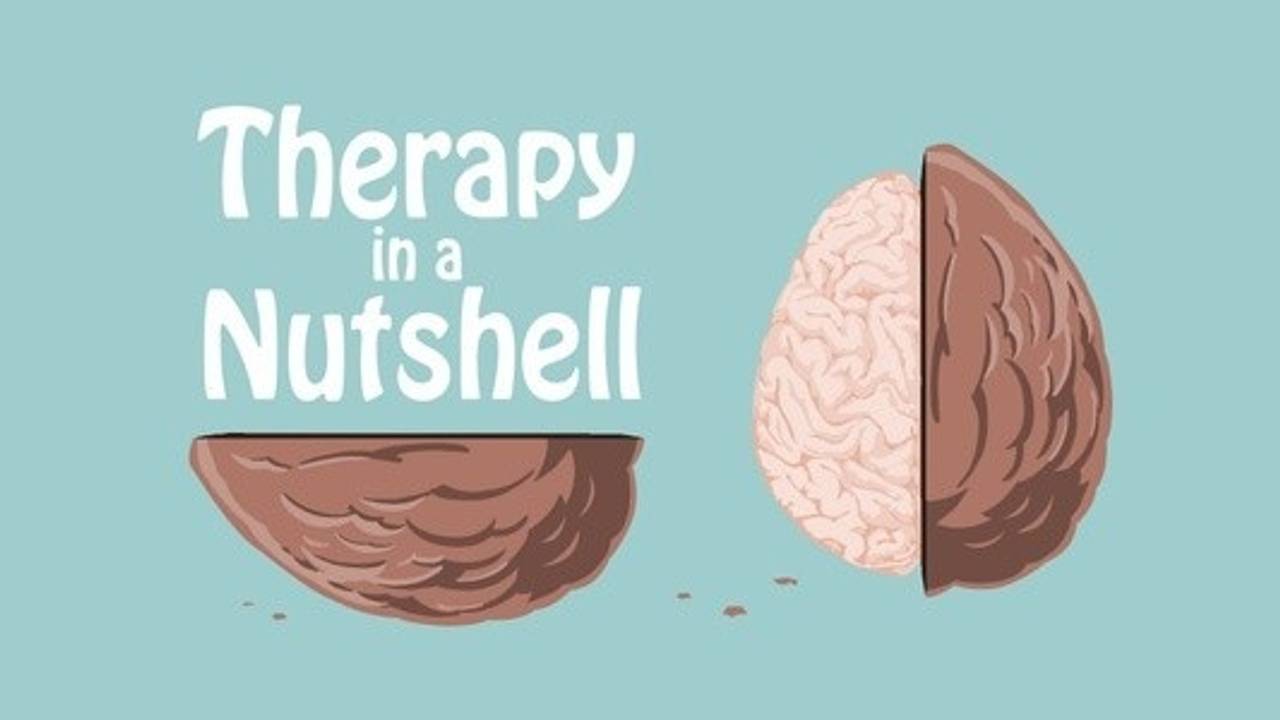Music can have a profound effect on both the emotions and the body. Faster music can make you feel more alert and concentrate better. Upbeat music can make you feel more optimistic and positive about life. A slower tempo can quiet your mind and relax your muscles, making you feel soothed while releasing the stress of the day. Music is effective for relaxation and stress management.
Research confirms these personal experiences with music. Current findings indicate that music around 60 beats per minute can cause the brain to synchronize with the beat causing alpha brainwaves (frequencies from 8 – 14 hertz or cycles per second). This alpha brainwave is what is present when we are relaxed and conscious. To induce sleep (a delta brainwave of 5 hertz), a person may need to devote at least 45 minutes, in a relaxed position, listening to calming music. Researchers at Stanford University have said that “listening to music seems to be able to change brain functioning to the same extent as medication.” They noted that music is something that almost anybody can access and makes it an easy stress reduction tool.
So what type of music reduces stress the best? A bit surprising is that Native American, Celtic, Indian stringed-instruments, drums, and flutes are very effective at relaxing the mind even when played moderately loud. Sounds of rain, thunder, and nature sounds may also be relaxing particularly when mixed with other music, such as light jazz, classical (the “largo” movement), and easy listening music. Since with music we are rarely told the beats per minute, how do you choose the relaxation music that is best for you? The answer partly rests with you: You must first like the music being played, and then it must relax you. You could start by simply exploring the music on this web page. Some may relax you, some may not. Forcing yourself to listen to relaxation music that irritates you can create tension, not reduce it. If that happens, try looking for alternatives on the internet or consult with Counseling Service staff for other musical suggestions. It is important to remember that quieting your mind does not mean you will automatically feel sleepy. It means your brain and body are relaxed, and with your new calm self, you can then function at your best in many activities.
Experiment now. Experience a “sound bath” and let the music carry you away
The links below each open relaxing musical selections in YouTube.
A Moment of Peace Meditation
Aneal & Bradfield, “Heaven and Earth Spirits” track from Life & Love). Lovely contemporary piano music with accompanying instruments and nature scenes.
Echoes of Time
C. Carlos Nakai from the Canyon Trilogy. Serene Native American flute music, with a picture of Nakai backlit by the sun at the Grand Canyon.
The Winding Path
Ken Kern from The Winding Path. Highly rated, beautiful piano music with accompanying instruments with pictures of exquisite flowers and plants.
Classical Indian Music for Healing and Relaxing
Gayatri Govindarajan, “Pure Deep Meditation” track. Lovely and rhythmic music played on the veena, the most ancient of the Indian plucked-instruments, with nature scenes.
Angels of Venice
Angels of Venice from Music for Harp, Flute and Cello. Classical with 3 instruments with nature pictures.
Earth Drum
“Spirit Vision,” (David & Steve Gordon. Serene and lovely contemporary Native American informed-drumming music utilizing Taos Log Drum and Incan Pan along with other instruments and ocean/forest nature scenes.
Buddha Spirit
Aneal & Bradfield from Light & Love. Reflective but strong contemporary music utilizing various instruments and occasional humming voices with colorful oscillating fractals
Spa Relaxing Music
Tranquil contemporary instrumental with piano and a fixed candle light.
Relaxation Music: 1-Hour Meditation Candle
Serene contemporary instrumental with piano and one flickering candle.
Sleep Deeply
Dan Gibson. Nature sounds and instrumental, tranquil sleep music.
Weightless
Marconi Union. The sounds on this video are carefully arranged harmonies, rhythms, and bass lines that help slow a listener’s heart rate, reduce blood pressure, and lower levels of the cortisol stress hormone.
The following content may contain Chewy links. PetMD is operated by Chewy.
Listening to certain songs can help soothe and calm you during stressful times. While research has documented the therapeutic effects of sound and music on the human brain, could listening to music calm dogs, too?
And if so, what type of music do dogs like? Is there a particular type of music, for example, that can help your dog be less stressed around loud noises like construction, thunderstorms, and fireworks, or just when they are home alone?
Can You Use Music to Soothe Dogs?
There has not been a ton of research in this area, but there is enough to suggest that music can be used to increase relaxed behaviors in dogs.
According to Dr. Susan Wagner, a veterinary neurologist and co-author of Through a Dog’s Ear: Using Sound to Improve the Health and Behavior of Your Canine Companion, the everyday noises in the average American household can have a big effect on our pets’ health and well-being.
She also says that we can counteract this noise pollution and enrich their environment through certain types of music that have had a relaxing effect on dogs in previous studies.
What Types of Music Are Calming for Dogs?
A 2002 study conducted by animal behaviorist Dr. Deborah Wells confirmed the relaxing effect on dogs of classical music. In this study, the dogs spent more time resting and being quiet, and less time standing when exposed to classical music compared to heavy metal music, pop music, or conversation.
In 2005, Dr. Susan Wagner, a board-certified veterinary neurologist, found that solo piano music created according to psychoacoustic principles—with slower tempos and simple arrangements and sounds—was more effective in reducing anxiety than popular classic music. While both calmed the dogs in the study enough to make them lie down, the solo piano was even more effective.
A later study done in 2012 by Dr. Lori Kogan from Colorado State College of Veterinary Medicine also investigated the effects of classical music, heavy metal, and specifically designed music on 117 dogs in a kennel environment. She found that while listening to classical music, the dogs spent more time sleeping and less time vocalizing than when listening to other music or no music.
More recently, a study done in 2017 showed that soft rock and reggae, especially, led to more relaxed behaviors and increased heart rate variability, which indicates less stress.
Is There Music Made to Soothe Dogs?
Here are some options for relaxing music for dogs:
-
Follow Preventive Vet on Spotify for different pet-friendly playlists.
-
Try the Pet Acoustics Pet Tunes calming music dog speaker, which features 90 minutes of calming sounds for dogs.
-
Canine Lullabies and Through a Dog’s Ear are both popular recordings.
-
Do a search on YouTube for the top relaxing dog music videos.
-
There are also apps devoted to calming music for dogs.
Some music is produced specifically for dogs and has frequencies that dogs, and not humans, can hear. While each dog may have their own music preferences, the tempo, length of the musical notes, simplicity of tones, and regular rhythms are the most important calming qualities.
When to Play Calming Music for Dogs
Your dog may appreciate soothing music in the following situations:
-
If they are a new puppy or dog adjusting and settling in after being brought to your home.
-
Dogs with separation anxiety, when they are left alone. While the sound of music may be comforting, be sure you also play the same music when you are home with them so they don’t associate the music with being home alone.
-
When your dog spends time in their crate or safe space.
-
Traveling in a car can cause anxiety, so playing some familiar music that you have previously played at home might help them relax
Should you play soothing music for your dog during fireworks and thunderstorms?
These noises can be stressful for many dogs, so playing a favorite tune can help distract them from the noises outside and keep them calm. Music can help mask the sound of fireworks or thunderstorms.
For puppies and dogs who haven’t yet shown anxiety or fear of loud noises, it is worthwhile to introduce noises in a positive way to prevent noise phobia or anxiety from developing. While most effective during your puppy’s imprint period (between 5 to 16 weeks of age), it can still be done at any age.
Dog trainer Victoria Stilwell partnered with Through a Dog’s Ear to create audio tracks that combine calming music with low-volume sound effects like fireworks, thunderstorms, and city sounds. These are great tools to introduce a puppy to new sounds in a positive way or to use in a desensitization training plan.
The Sound Proof Puppy app is another option to proactively expose your puppy to new sounds during their socialization period. It’s available on the Apple App Store and on Google Play.
Tips for playing music to calm your dog:
-
Keep the volume moderate to low. Their sense of hearing is about four times as sensitive as ours!
-
Start playing music when your puppy is young and learning. This makes music one of the normal sounds that they would hear in the home.
-
Try various genres to get an idea of what type of music calms them the most and how they react to each one.
-
Don’t just play music when your dog is home alone. Play it also when you are home so they don’t associate music with you leaving the house. This can increase stress rather than soothing them.
References
Bowman A, Dowell FJ, Evans NP. The effect of different genres of music on the stress levels of kennelled dogs. Physiology & Behavior. 2017;171:207-215.
Kogan LR, Schoenfeld-Tacher R, Simon AA. Behavioral effects of auditory stimulation on kenneled dogs. Journal of Veterinary Behavior. 2012;7(5):268-275.
Leeds J, Spector L, Wagner S. Bioacoustic Research & Development (BARD) Canine Research Summary. 2005-2007.
Featured Image: iStock.com/MajaMitrovic



